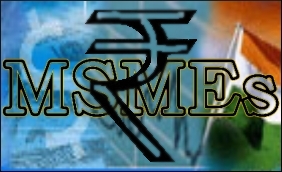|
|
|

|
'Indian MSMEs have manufacturing cost advantage in global value chain'
|
|

|
|
| Top Stories |
 |
|
|
|
SME Times News Bureau | 21 Jan, 2022
There is tremendous potential for Indian engineering MSMEs to be
integrated into the global value chain due to their manufacturing cost
advantage, and to achieve high growth, the two most significant
interventions required are related to credit assistance and technology
upgradation, MSME Secretary B.B. Swain said on Thursday.
The MSME
Ministry has been working closely with other Ministries and Departments
to facilitate the ease of doing business for MSMEs, he said in his
address at the inaugural session of MSME Conclave organised by EEPC
India.
MSMEs contribute around 30 per cent to India's GDP and
have a 50 per cent share in the country's exports. MSMEs engaged in
manufacturing engineering products are about 29 per cent of the 67 lakh
MSMEs which have registered since July 1, 2020 on the Udyam registration
portal. In the National Manufacturing Policy, manufacturing output has
been targeted to increase MSMEs' contribution to the GDP.
A
Knowledge Paper titled 'Integrating Indian MSMEs to Global Value Chain',
released in the inaugural session, suggested that India's trade regime
should promote value addition in the country. Hence, the general tariff
structure should be low on raw and primary goods, slightly higher on
intermediaries, and the highest on final products.
It further
recommended that both direct and indirect tax structure should be
neutral and not discriminate between the nature of firms. Banks and
financial institutions should be more willing to discern genuine
exporters and demand less collateral. Stability in policy measures with
less intervention and emphasis on neutrality on behalf of the government
will be necessary, it added.
|
|
|
| |
|
|
|
|
|
|
|
|
|
|
|
|
|
|
| |
| Customs Exchange Rates |
| Currency |
Import |
Export |
US Dollar
|
₹91.25
|
₹89.55 |
UK Pound
|
₹122.85
|
₹118.85 |
Euro
|
₹107.95
|
₹104.3 |
| Japanese
Yen |
₹59 |
₹57.1 |
| As on 29 Dec, 2025 |
|
|
| Daily Poll |
 |
 |
| What is your biggest hurdle to scaling right now? |
|
|
|
|
|
| Commented Stories |
 |
|
|
|
|
|
| |
|